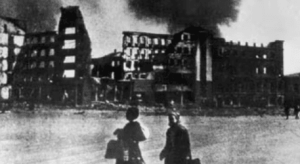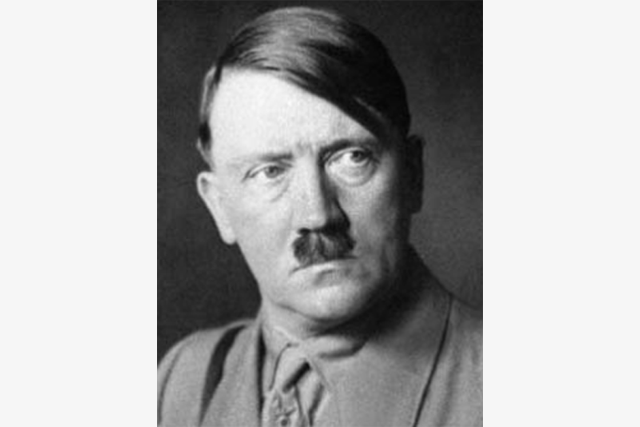Adolf Hitler’s life story
Hey guys today we would like to illustrate Adolf Hitler’s life story and his war strategy. I hope this article explores entire things and you will be able to find out the real scenario.
Adolf Hitler was a prominent figure in 20th-century history, known for his role as the leader of Nazi Germany and his responsibility for the Holocaust and World War II. Here is a brief summary of his life:
Early Life: Adolf Hitler was born on April 20, 1889, in Braunau am Inn, Austria-Hungary (now Austria). He had a troubled childhood and struggled with his relationship with his father.
Adolf Hitler was born on April 20, 1889, in Braunau am Inn, a town in Austria-Hungary (now Austria), near the German border. Here are some key points about Hitler’s early life:
Family Background: Hitler’s father, Alois Hitler, was a stern and authoritarian customs official. His mother, Klara Hitler, was a gentle and nurturing woman. Adolf Hitler had five siblings, but only his younger sister, Paula, survived into adulthood.
Early Education: Hitler attended elementary school in Linz, Austria. He showed an early interest in art and developed a passion for German nationalism and anti-Semitic ideas.
Failed Art Career: Hitler’s dream was to become an artist, but he faced rejection from the Vienna Academy of Fine Arts twice. His years in Vienna were marked by poverty, and he earned a meager living by selling postcards and paintings.
Move to Munich: In 1913, Hitler moved to Munich, Germany, hoping to avoid conscription into the Austrian army. He lived a bohemian lifestyle, often struggling financially.
World War I Service: When World War I broke out in 1914, Hitler volunteered for the German army and served as a soldier on the Western Front. He received the Iron Cross for bravery but was injured twice, including a gas attack that temporarily blinded him.
Transition to Politics: After the war, Hitler joined the German Workers’ Party (DAP), which later became the National Socialist German Workers’ Party (NSDAP or Nazi Party). He quickly rose through the ranks due to his powerful oratory skills and charisma.
Beer Hall Putsch: In 1923, Hitler attempted to overthrow the Weimar government in what became known as the Beer Hall Putsch. The coup failed, and Hitler was arrested. During his imprisonment, he wrote his manifesto, “Mein Kampf,” outlining his political ideology and plans for Germany’s future.
Rise of the Nazi Party: Following his release from prison, Hitler focused on rebuilding the Nazi Party. The economic hardships and political instability of the Weimar Republic provided fertile ground for the growth of extremist ideologies.
Legal and Political Maneuvering: Hitler capitalized on the weaknesses of the democratic system and used legal means to rise to power. The Nazis gained support through propaganda, mass rallies, and exploiting economic discontent.
Appointment as Chancellor: In 1933, President Paul von Hindenburg appointed Hitler as Chancellor of Germany. Hitler quickly consolidated power, and within a few months, he eliminated political opposition, dismantled democratic institutions, and established a dictatorship.
These early experiences and events laid the groundwork for Hitler’s later actions as the leader of Nazi Germany and his role in World War II.
Rise to Power: Hitler joined the German Workers’ Party in 1919, which later became the National Socialist German Workers’ Party (Nazi Party). He became its leader and, through political maneuvering, became the Chancellor of Germany in 1933.
Nazi Rule: Once in power, Hitler consolidated his control over the German government. He implemented policies that promoted nationalism, militarism, and Aryan supremacy. His leadership led to significant social and economic changes in Germany.
World War II: In 1939, Hitler’s expansionist ambitions led to the invasion of Poland, triggering World War II. His aggressive expansionist policies led to further invasions and conflict throughout Europe.
Holocaust: Hitler’s regime orchestrated the systematic genocide of approximately six million Jews and millions of others during the Holocaust, in what remains one of the most heinous crimes in human history.
Downfall: As World War II turned against Germany, Hitler’s leadership became increasingly erratic. In April 1945, he realized the war was lost and committed suicide in his bunker in Berlin on April 30, 1945.
Legacy: Adolf Hitler’s legacy is one of infamy and horror. He is remembered as the architect of the Holocaust, a war criminal, and a dictator who caused immense suffering and death during his time in power.

Why Adolf Hitler failed 2nd world war
Political, military, and strategic elements all played a part in Adolf Hitler’s downfall in World War II. The following are some major causes of Nazi Germany’s defeat in the Second World War:
Overextension of Resources: By initiating invasions on several fronts, Hitler committed the strategic error of overextending German resources. German forces were overextended during the 1941 invasion of the Soviet Union (Operation Barbarossa), which led to an expensive and protracted conflict on the Eastern Front.
Why Hitler’s elaborate strategy for the Second World War failed
September 1941, two years into the war, German weaponry appeared to be able to handle everything that came their way. With the decisive conquest of Western Europe, there appeared to be little chance of significant opposition to German rule. German action had made up for the Italian inability to construct Mussolini’s much-vaunted new Roman empire in the Mediterranean. Germany had conquered Greece and occupied Yugoslavia. Due to Rommel’s outstanding generalship, the British and their allies were being forced to advance eastward into Egypt, endangering the Suez Canal, in North Africa.
The invasion of the Soviet Union in June 1941 had yielded extraordinary results, including the besieging of Leningrad (modern-day St Petersburg) by German and Finnish forces, the capture of Smolensk and Kyiv, and the mass killing or capturing of millions of Red Army soldiers in a series of massive encirclement operations that brought the German armed forces to Moscow. With a girdle of allies stretching from Finland and Vichy France to Romania and Hungary, and with countries like Sweden and Switzerland providing no real threat because to their largely benign neutrality, the Greater German Reich appeared to be unstoppable in its quest for European domination.
However, looking back, this turned out to be the pinnacle of German achievement. Hitler was essentially confronted with the issue of Germany’s lack of resources to fight on numerous fronts simultaneously. Prominent economists like Fritz Todt had started to realize this already. Hitler’s personal architect, the youthful Albert Speer, succeeded Todt as armaments minister after the latter’s death in an aircraft collision on February 8, 1942. Driven by an unwavering belief in Hitler and his will to triumph, Speer reorganized and rationalized the armaments production system, expanding upon Todt’s earlier innovations. His techniques significantly increased the quantity of planes and tanks produced in Germany.
Strategic Mistakes: Hitler often interfered with military strategy, making decisions based on ideology rather than sound military principles. His insistence on dividing military forces and focusing on ideological goals, such as the extermination of Jews, detracted from strategic objectives.
Poorly Timed Declaration of War: The invasion of the Soviet Union diverted German forces away from completing the conquest of the British Isles and securing Western Europe. This decision resulted in a two-front war, a situation Germany had sought to avoid since World War I.
Failure to Defeat Britain: Despite early successes in Western Europe, Germany failed to defeat the United Kingdom. The Battle of Britain and the Blitz were crucial moments where the Royal Air Force successfully defended Britain, preventing a German invasion.
Inadequate Economic Planning: Germany faced economic challenges as the war progressed. The country lacked the industrial capacity and resources to sustain a prolonged conflict against the Allied powers, particularly the United States.
Lack of Coordination Among Axis Powers: The Axis powers, primarily Germany, Italy, and Japan, lacked effective coordination and cooperation. They had different strategic goals, and attempts to support each other often fell short.
Failure to Recognize Soviet Resilience: Hitler underestimated the Soviet Union’s ability to resist and recover. The harsh Russian winter, coupled with the vastness of the Soviet territory, posed significant challenges to the German military.
Entrance of the United States: The entry of the United States into the war after the attack on Pearl Harbor in 1941 significantly shifted the balance of power. The industrial and military capabilities of the United States, combined with the resources of the Allied powers, ultimately overwhelmed Germany.
Strategic Bombing Campaign: The Allied strategic bombing campaign, particularly the bombing of German cities and industrial complexes, weakened the German war machine and disrupted production and transportation.
Internal Dissent and Resistance: As the war progressed and German defeats mounted, internal dissent and resistance increased. The failed assassination attempt on Hitler in 1944 (Operation Valkyrie) is one notable example of internal opposition.
In summary, Hitler’s military and strategic decisions, along with a combination of external factors, contributed to the failure of Nazi Germany in World War II. The war ended with the defeat of Germany in 1945.
It’s essential to study and remember this history to prevent such atrocities from happening in the future and to promote tolerance, peace, and understanding.
Adolf Hitler, an Austrian by birth, went on to become Germany’s leader and one of the most despised individuals in history. Hitler, who served in World War I, was born in 1889. He was incensed by the peace that was forced upon Germany following that conflict, and for the remainder of his life, he worked to undo the peace that had degraded his adopted nation. He established the National Socialist Worker’s Party in 1919, and the Munich Putsch landed him in jail in 1923. His party was able to secure many seats in the German legislative in 1930 as a result of the catastrophic economic crisis, which he attributed to the Jews.
He maintained and consolidated control by instilling fear and intimidation, especially in the Brownshirts. He founded the Gestapo, the SS, and the Concentration Camps, which were used to house Jews and other opponents of Hitler. Hitler started the European War in 1939 when his army launched a blitzkrieg invasion of Poland. He then launched invasions into France and his northern neighbors, but he was unable to bring down Great Britain, who had beaten the Germans in the Battle of Britain. He launched Operation Barbarossa, an invasion of the Soviet Union in 1941, and before the Russians could stop him, he advanced all the way to Moscow.
Hitler’s refusal to cede any area that had already been seized caused the Germans to lose both the Battle of Kursk and Stalingrad.
He was driven from North Africa by both the British and the Americans. After the Allies invaded France’s Normandy in 1944, they drove the Germans back farther and farther while liberating Europe in the process. In a desperate attempt to save face, Hitler ordered an offensive known as the Battle of the Bulge. Despite their early victories, the Germans were eventually stopped and had to retire.
Along with his long-term mistress and temporary wife, Eva Braun, Hitler committed suicide in April 1945, with the Soviets in Berlin and the Americans advancing in the west.
The Germans gave up on May 8, 1945.
Place of Birth: Austria’s Braunau
Date of Birth: 04.20.1889
Location of Death: Germany’s Berlin
Date of Death: 4/30/45
You may visit https://en.wikipedia.org/wiki/Adolf_Hitler for more details.
N.B: All information collected from online surfing.

0 comments on “Adolf Hitler’s life story”